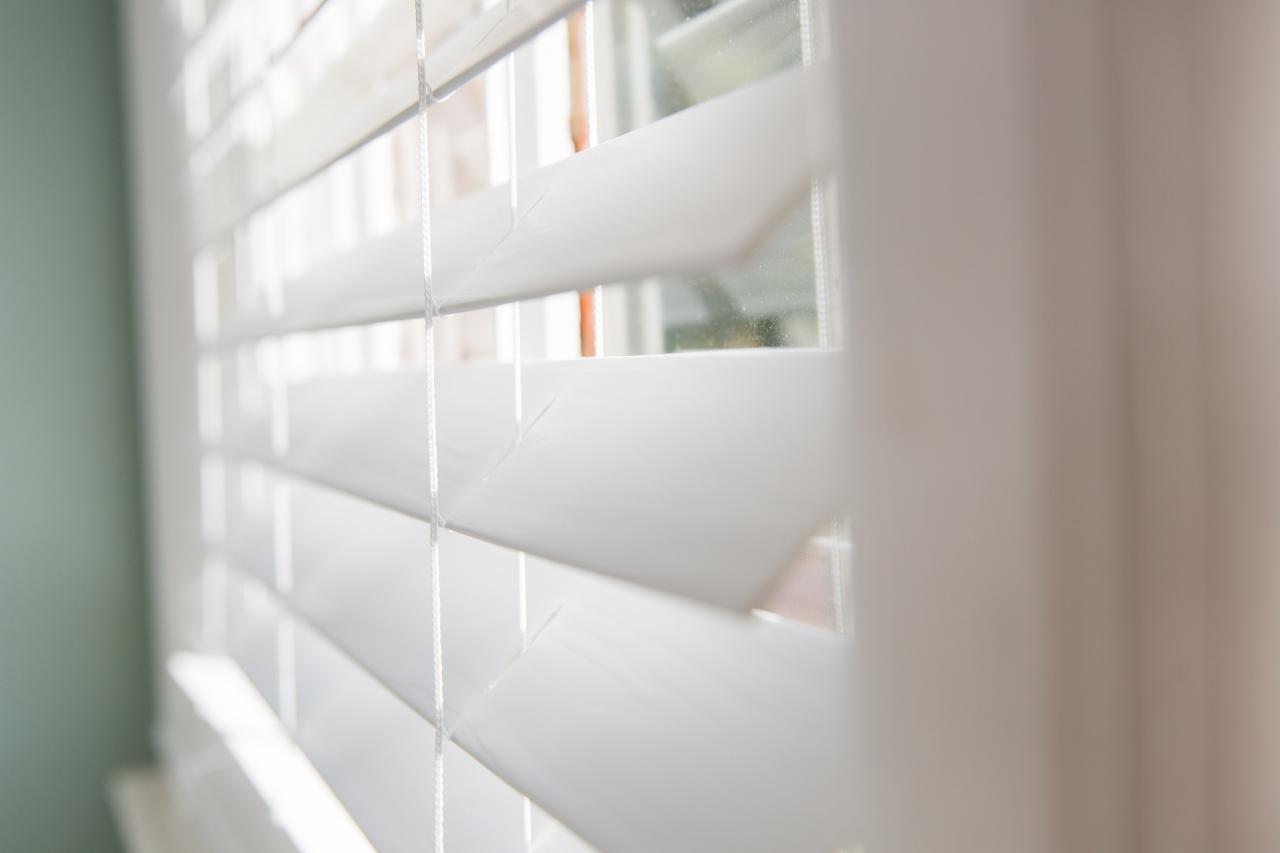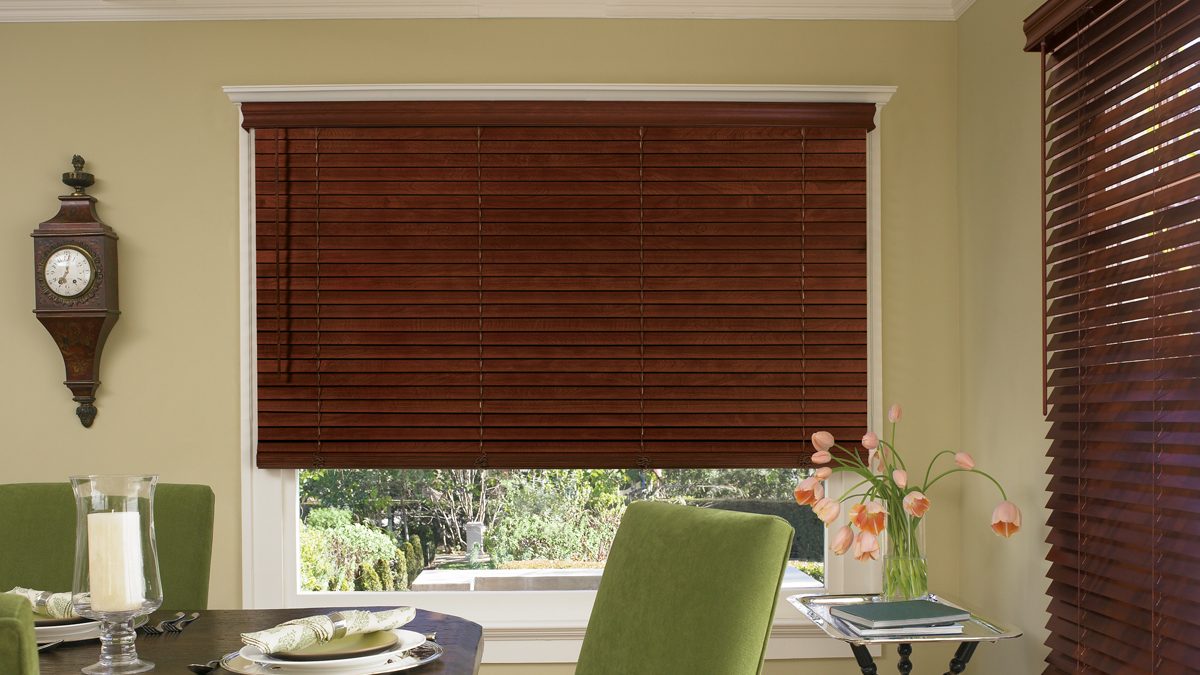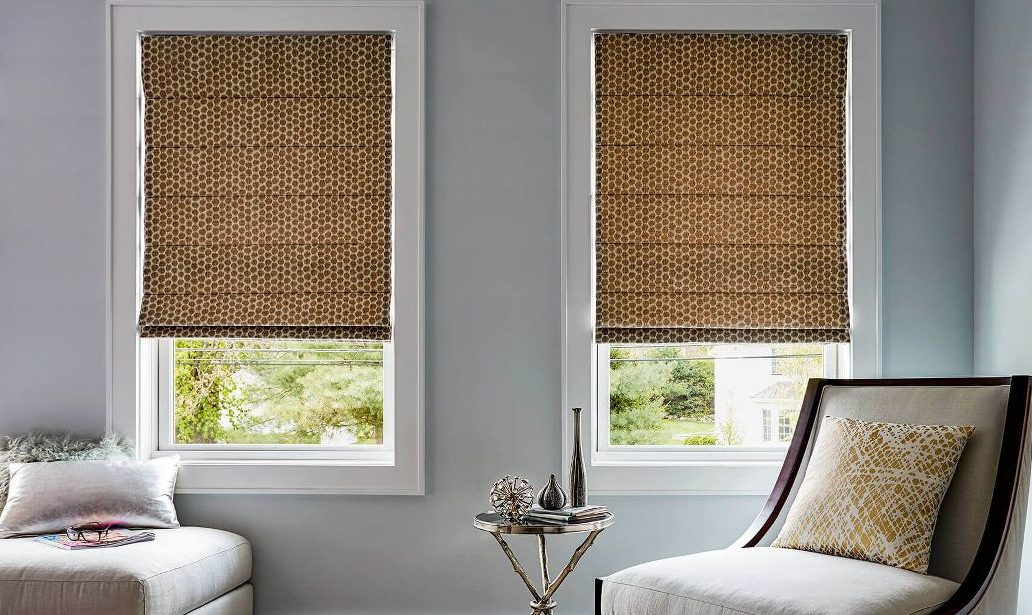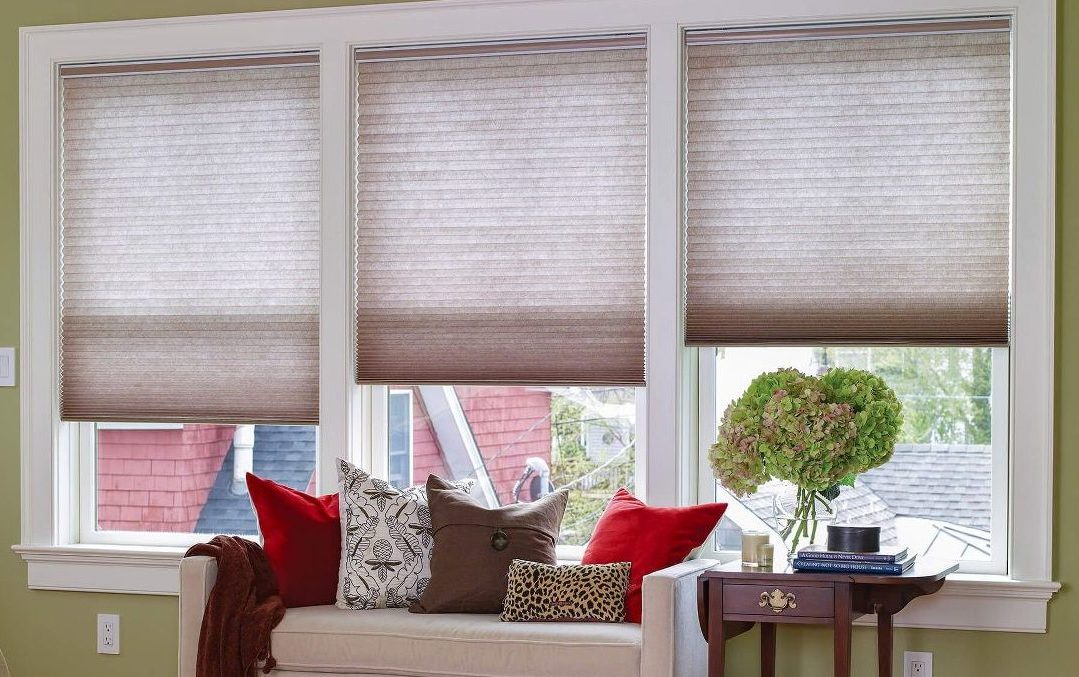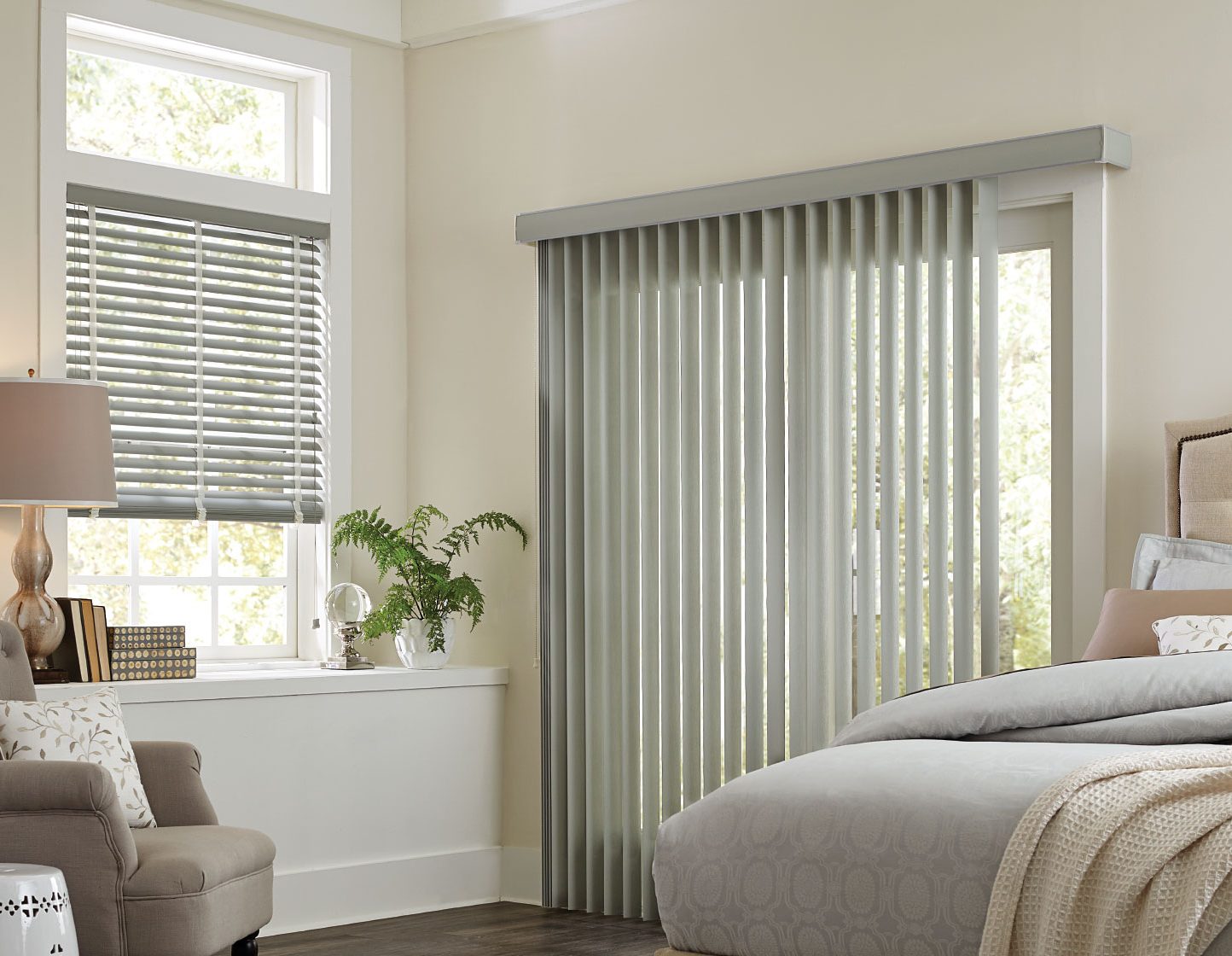Window blinds are a popular, stylish alternative to curtains for managing your home’s privacy, temperature, and appearance. The right blinds can help keep your home cool in summer and warm in winter. Whether you’ve chosen fabric, plastic, or wooden blinds, horizontal or vertical slats, or classic solar shades, one thing is true: window blinds attract dust. Follow these cleaning tips to eliminate dust and dirt and keep your blinds looking as good as new.
Whatever type of blinds or shades you have, remember to always check the manufacturer’s instructions before cleaning. Spot test an inconspicuous area with any new cleaning solution before using it across the whole blind, and always clean from top to bottom. Otherwise you’ll end up spreading dust across areas you’ve already cleaned.
How to clean plastic blinds
Plastic window blinds are the classic window shading solution, combining privacy, temperature control, and easy maintenance. Usually made of vinyl or PVC, they’re an affordable and popular choice for many people. But low maintenance doesn’t mean zero maintenance—plastic window blinds need to be cleaned regularly or they’ll end up attracting dust and looking dull and dirty. Here’s how you can keep your PVC and vinyl window blinds in as-new condition.
Equipment checklist:
- Microfiber cloth (see Top Tip)
- Dish soap and warm water
How to quickly clean plastic blinds
Step 1: Put the blinds in the open position. Too much water can make a mess of dusty blinds, so start by rubbing a clean, dry microfiber cloth over each slat to remove as much dust as possible.
Step 2: Add a few drops of dish soap to warm water. Dampen a cloth and wipe each slat, rinsing the cloth out with more soapy water as it gets dirty.
Step 3: Wipe off any excess water and let blinds air dry.
Step 4: Vacuum up any dust that may have fallen to the floor.
Pro Tip: Don’t have any microfiber cloths at hand? Use an old sock instead!
You can also purchase a microfiber blind duster to make cleaning a breeze. Just leave the blind in the open position and run the duster between the slats to quickly remove dust and dirt. Then close the blinds so the convex side is toward you and brush the duster over the slats, starting from the top and working down.
If it’s been a while since your blinds were last cleaned, they might need a more intensive cleaning than normal. This is especially the case if the blinds are in a kitchen or bathroom, where cooking grease or high humidity can build up quickly and leave blinds discolored.
How to clean dirty or greasy plastic blinds
Step 1: Remove as much dust and grime as possible from your blinds by following the steps for regular cleaning as above.
Step 2: Take down the blinds and place them in a bathtub filled with warm water. Soak for an hour.
Step 3: Wipe away any remaining dirt with a clean cloth.
Step 4: Hang the blinds outside if possible, or over the back of the sofa to air dry (see Pro Tip).
Pro Tip: Place an old towel under the blinds while drying to stop them from scratching the furniture or getting scratched.
Aim to clean your blinds once or twice a month. While it might be a pain compared to other household chores, cleaning your blinds regularly will help you stay on top of the dust and dirt accumulation, making it an easier job each time.
If you need to spot-clean a window blind, spray a small amount of all-purpose surface cleaner onto a clean, dry microfiber cloth and wipe away the stain. Avoid spraying your window blinds directly with any cleaner.
How to clean wooden blinds
Wooden blinds are a durable, lightweight, and traditional way to shield windows from prying eyes and glaring light. Whatever wood your blinds are made from, they can all be cleaned with similar methods. Remember to avoid getting wooden window blinds wet whenever possible. Even though the wood is treated, water can cause warping and discoloration. You should also avoid using any harsh chemicals such as bleach or ammonia, as they can damage the seal or stain of the wood.
Equipment checklist:
- Microfiber cloth or duster
- Vacuum cleaner with brush attachment
- Wood polish
- Fresh water
- Paper towels
How to quickly clean wooden blinds
Step 1: Open the blinds and rub a clean, dry microfiber cloth or soft feather duster between the slats to remove dust.
Step 2: Close the blinds so the convex side is facing toward you. Wipe down the blinds from top to bottom.
Step 3: Remove dust from hard-to-reach corners using the brush attachment on your vacuum cleaner.
Step 4: Vacuum any dust that might have fallen on the floor.
Pro Tip: You can reduce the amount of dust that settles on your wood or bamboo window blinds by applying wood polish after cleaning. Simply dampen a clean cloth with a little wood polish and rub it over the slats.
If your wooden blinds are dirty and wiping them down isn’t enough, you’re going to have to get them wet. In order to minimize the risk of damage, only use a damp cloth, never a soaked one, and be sure to wipe away any excess immediately.
How to deep clean wooden blinds
Step 1: Get your blinds as dust-free as possible by following the quick cleaning steps above.
Step 2: Dampen a clean microfiber cloth and gently rub the stain or dirt to remove it. You may need to hold the slats securely to do this.
Step 3: Wipe away any excess moisture with paper towels, making sure to blot everything up.
Wooden blinds look effortlessly elegant, but they can be much more expensive than PVC or vinyl blinds. Protect your investment and ensure your home looks great by following our instructions to clean wooden window blinds without causing any damage. With the right care, your wooden blinds will last for years.
Cleaning mini blinds and metal blinds
Most mini blinds are metal, and most metal blinds are made from aluminum. They are strong and hard wearing, and much more durable than plastic or wooden blinds when exposed to strong sunlight, humidity, or extreme temperature shifts. Properly cared for, they will last for years. Many metal blinds are treated with anti-static to repel dust, but they’ll still need cleaning to keep them looking their best.
Equipment checklist:
- Microfiber cloth
- Dish soap and cold water
- Paper towels
- Car washing brush
How to quickly clean metal or mini blinds
Step 1: Open the blinds so you can easily reach between the slats.
Step 2: Use a clean, dry microfiber cloth to wipe dust from each slat.
Step 3: Once you’ve removed as much dust as possible, dampen the cloth with cold soapy water and rub over the blinds.
Step 4: Remove excess water using paper towels.
Metal window blinds stand up to most conditions, but they still need a good cleaning every once in a while. If your mini blinds are in a garage, or other messy environment, you might need to take them down to clean them properly. Here’s how to do it.
How to deep clean aluminum or mini blinds
Step 1: Take down your blinds by following the manufacturer’s instructions, or by tilting the slats downward, but not fully closed, and unhooking from the window frame.
Step 2: To remove accumulated dirt, take the blinds outside and lay them flat on the ground. Add a few drops of dish soap to a bucket of cold water, and use a car washing brush to clean the blinds, wiping from left to right rather than up and down.
Step 3: Rinse off residual soap using clean water (see Pro Tip).
Step 4: To prevent water marks, wipe off any excess water before it dries.
Step 5: Hang the blinds over a fence or furniture to dry.
Pro Tip: When washing metal blinds outside, you can use a garden hose on a low pressure setting to clean off residual soap.
If your mini blinds are kept in a kitchen, they’ve probably got some grease buildup on them from cooking. Grease can be tough to remove, and smears make your metal blinds look unsightly. Follow these easy instructions to banish grease for good.
How to clean grease off metal or mini blinds
Step 1: Take down the blinds as per the steps above.
Step 2: Put the blinds in a bath filled with warm, soapy water.
Step 3: Let the blinds soak for an hour.
Step 4: Rinse with clean water and wipe away any dirt or soap residue.
Step 5: Blot up excess water and allow to air dry before reinstalling.
Pro Tip: Keep dust away once your blinds are clean by rubbing them with a dryer sheet.
Metal blinds are a great choice if you want strong, durable window blinds that can withstand tough environments. Keep your mini blinds in their best condition by cleaning them regularly and removing any damaging dirt and grease.
How to clean fabric window shades
Shades are a great alternative to window blinds, and the lack of slats makes them much easier to care for and less likely to accumulate dust. However, that doesn’t mean they never need cleaning. By carrying out quick maintenance cleans once or twice a month, you’ll keep your window shades looking as fresh and bright as the day they were installed. Here’s how to clean each type of fabric shade, from cellular to Roman.
How to clean solar or Roman shades
Solar shades are designed to reduce the amount of sunlight that gets into your home, helping to keep rooms cooler and reducing glare. They’re usually constructed from a single piece of fabric suspended on a roller. Roman shades loop into folds or pleats at the top of the window when raised, and can be made from fabric or bamboo.
Equipment checklist:
- Vacuum cleaner with brush attachment
- Lint roller
- Clean microfiber cloth
- Fresh water
Step 1: Using the brush attachment on your vacuum cleaner, remove any dirt and dust from your blinds.
Step 2: If you live with pets, or in a dry environment where static is a problem, use a lint roller to remove stubborn hairs and dust.
Step 3: Spot clean stains or dirt using a cloth dampened with fresh water. Dab at stains, never rub them.
How to clean cellular or pleated shades
Cellular, or honeycomb shades get their name from their hexagonal shape. They’re thicker than most other window blinds, and are used as insulators as well as to control light. Their open cell shape traps air, preventing heat from being lost through windows. Unfortunately, that shape also collects a lot of dust! Pleated shades are very similar to honeycomb shades, however they are made from a single layer of cells, while honeycomb shades have two or three. As a result, pleated blinds aren’t such good insulators, but they are less bulky, admit more light, and are more economical to install.
Equipment checklist:
- Vacuum cleaner with brush attachment
- Hairdryer
- Microfiber cloth
Step 1: Use the brush attachment on your vacuum cleaner to remove as much dust as possible from the outside of your pleated or honeycomb blinds.
Step 2: Take your hairdryer and using a cool setting, blow away the dust and dirt from inside the cells.
Step 3: Vacuum up the excess dust.
Step 4: Spot clean stains with a damp, clean cloth.
Pro Tip: Use a rubber sponge (also known as a dry sponge) to remove dust and dirt from fabrics. You’ll find them in most hardware stores. Made of vulcanized rubber, they are non-greasy, residue free, and gentle on delicate surfaces.
If your fabric shades are very dirty, avoid the temptation to put them in the washing machine. Instead, take them to a dry cleaner to ensure they are cleaned properly without getting damaged.
How to clean vertical and horizontal blinds
Whether your blinds go up and down or left to right makes a difference to how you clean them. Most household blinds are horizontal Persian or Venetian blinds. They are easy to install and maintain, but they have lots of horizontal slats that collect dust and dirt. A quick and easy way to clean horizontal blinds is to put an old sock over your hand and rub it across each slat while the blind is open.
Vertical blinds are less likely to attract dust because there are less flat surfaces for it to settle, so they need cleaning less often than horizontal blinds. When cleaning vertical blinds, use a duster, or the brush attachment on your vacuum, and always clean in a downward motion. This prevents the blinds from becoming unhooked.
After cleaning your window blinds
Once you’ve cleaned your window blinds or shades, don’t forget the strings. Strings attract dust just like blinds do, and can quickly become discolored in bright sunlight. To clean them, dip a microfiber cloth into warm water and fabric cleaner, grip the string with the cloth, and clean from top to bottom.
